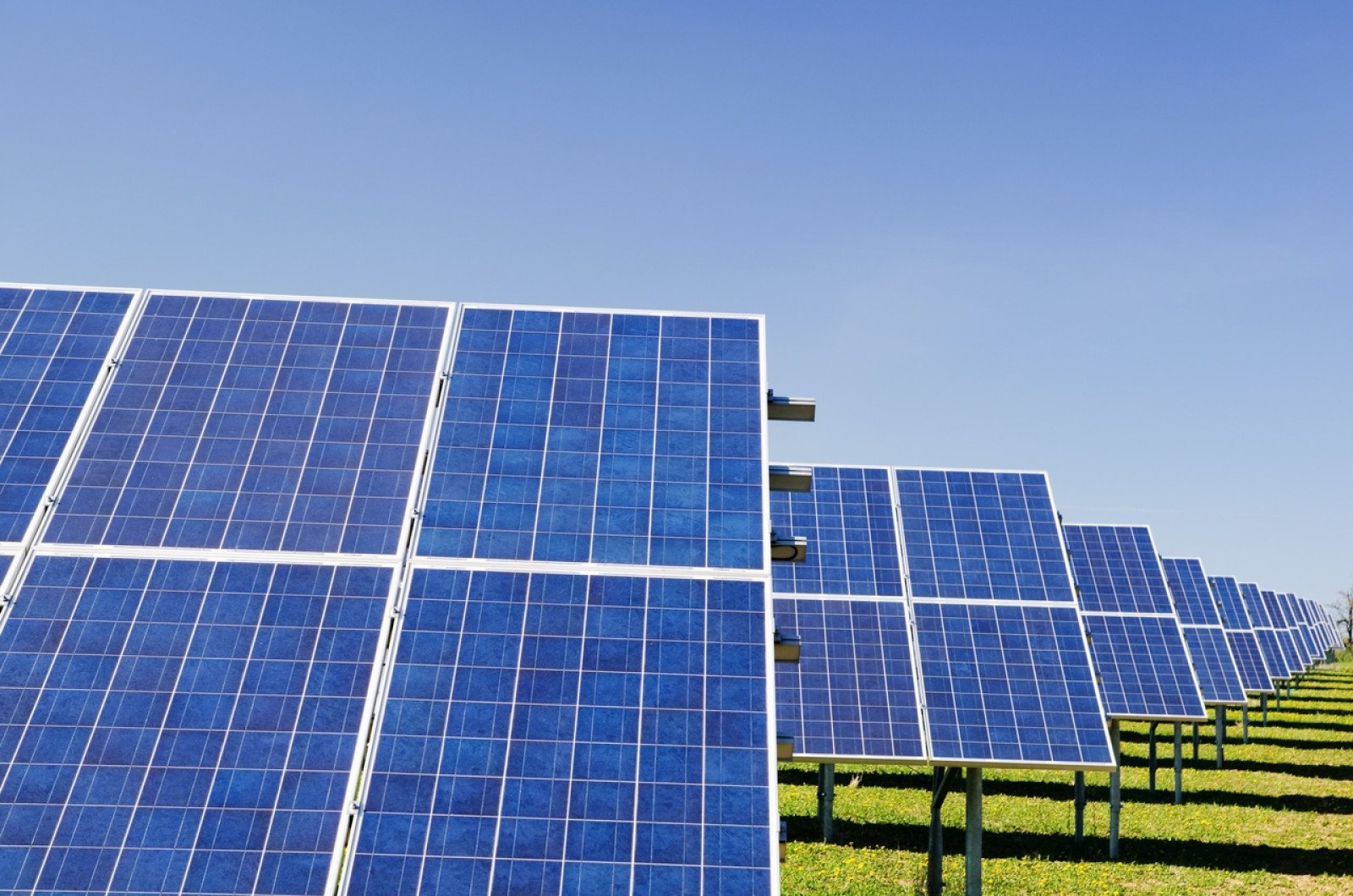How predictable is the price of solar panels?
Use linear relations to analyze and mathematically describe the price of solar panels over time.

Overview
Students deepen their understanding of linear relations and effective mathematical descriptions. They examine graphs of solar PV module prices and cumulative capacity to determine the predictability of the price. They use lines of best fit to determine the strength of the relationship as a linear relation.
Instructions
What you'll need
- "Judging lines of best fit" worksheet
- "How predictable?" slides
- Graphing calculators
- Digital projector and screen
- Open up the "How predictable?" slides. Display slide 1 and briefly explain to students that the first solar panels sold to consumers in the late 1950’s cost approximately $32,000. In 2018, the price of a similar solar panel would be approximately $6,400.
- Display slide 2 and invite students to make an initial hypothesis about the predictability of the cost of solar panels. Ask them to respond to the question, “How predictable is the price of solar panels? Highly predictable, somewhat predictable, not very predictable?”
- Encourage students to share their decisions and thinking with the class. Students might suggest that the price is highly predictable because the price decreases at a constant rate based on the general trend. Others may note that that the line is not perfectly straight and there are bumps.
- Invite your students to now describe the general trend in the graph: What is the best way to describe the general trend depicted in the graph? Student responses might include:
- the points look like they follow a straight line
- it generally has a constant rate of change
- a line could be drawn through the points
- As students share their thoughts, co-develop or present the criteria for an effective line/curve of best fit. Consider displaying the criteria for use later in this activity.
- connects as many of the data points as possible
- has as many points above the line as below the line as possible
- minimizes the distance between the line and the points not on the line (measured in units of y); the line is as close to as many points as possible
- Organize your students into pairs and provide each student with a copy of the "Judging lines of best fit" worksheet. Ask groups to decide which option is the most effective line of best fit. Remind groups to use the criteria to guide their thinking. Invite groups to share their decisions and thinking with the class.
- Guide students’ attention back to slide 2 and invite students to analyze Graph 1 more closely and in particular the scale of the axes.
- Ask, “How does the form of this graph affect your thinking about the predictability of the price of solar panels?”
- Inform students that the scale on each axis is a log scale. Briefly explain that this means the numbers on the x-axis do not increase in equal increments, and that the log of these numbers must be taken for this to happen. For example, the log 1 = 0, log 10 = 1, log 100 = 2, log 1000=3, and so on. Students could calculate these numbers using their calculators. As a result, the scale of the axes is non-linear therefore the original graph is not a linear relationship between the cost and cumulative capacity.
- Invite students to revisit their original hypothesis and ask if they would like to change their decision based on this new evidence.
- Display slide 3 and ask groups to decide which is more appropriate for this data: a line of best fit, or a curve of best fit? Encourage students to use the criteria to guide their thinking.
- As groups share their decision with the class, invite them to describe the graph using appropriate vocabulary. For example, negative correlation, non-linear, downward trend.
- Guide groups’ attention back to the original question and their conjecture. Invite groups to revisit their original decision based on what they’ve discovered in this activity. Conclude the activity by asking groups to mathematically describe the cost of solar panels over time.
Modify or extend this activity
Extensions
- Have students calculate the rate of change in the cost of solar PV modules over time.
Curriculum Fit
Mathematics 9
Big ideas
- Continuous linear relationships can be identified and represented in many connected ways to identify regularities and make generalizations.
Content
- Two-variable linear relations, using graphing, interpolation, and extrapolation
Competencies
- Use reasoning and logic to explore, analyze, and apply mathematical ideas
- Estimate reasonably
- Demonstrate and apply mental math strategies
- Use tools or technology to explore and create patterns and relationships, and test conjectures
- Model mathematics in contextualized experiences
Understanding and solving
- Apply multiple strategies to solve problems in both abstract and contextualized situations
- Develop, demonstrate, and apply mathematical understanding through play, inquiry, and problem solving
Communicating and representing
- Use mathematical vocabulary and language to contribute to mathematical discussions
- Explain and justify mathematical ideas and decisions
- Communicate mathematical thinking in many ways
Connecting and reflecting
- Reflect on mathematical thinking
- Connect mathematical concepts to each other and to other areas and personal interests
Assessments
Students may be assessed on their understanding of:
- properties of linear relations
- criteria for line of best fit
- creating graphs
- dependent and independent variables
- linear vs non-linear relations
- correlation and trends
Teaching Notes
This activity gets students thinking about what they have learned on two-variable continuous linear relations.
Knowledge of solar PV modules is not required for this activity. A solar photovoltaic (PV) module is also known as a solar panel; a panel is composed of interconnected solar PV cells. The total cumulative installed capacity represented the total maximum potential electrical power output of all the installed solar PV modules.
The price of solar PV modules has fallen more than 100-fold since 1976. On average, the cost falls by 22 percent for every doubling in solar PV capacity (although progress has not necessarily been constant over this period).
When asking students to make a conjecture, explain that a conjecture is when mathematicians use available data, evidence, and knowledge to make the best decision possible.
In the slides, graph 1 is log-log scale, and graph 2 is linear-linear scale.
In B.C., 96% of the electricity generated by BC Hydro is clean energy. Solar panels are another source of clean, sustainable energy that can supplement the clean energy produced by hydroelectric dams.








